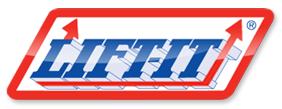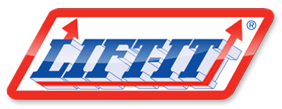There are primarily six basic types of industrial Crane Slings that riggers use to lift and manipulate materials. All six sling types can be found in the American Society of Mechanical Engineers, Sling Safety Standard, B30.9. They are: chain slings, wire rope slings, metal mesh slings, synthetic rope slings, web slings and roundslings.
There is no single sling that will accomplish every task, even if you are told that by those that market a specific sling type. All slings have certain unique advantages, as well as limitations. Two formidable limitations for synthetic slings are susceptibility to damage by cutting and abrasion and damage by heat.
All sling users must be trained in the selection and use of industrial crane slings. They must also know how to inspect the rigging and be aware of hazards, such as chemical and environmental damage, as well as knowing proper storage conditions.
One of the first considerations for sling users is the selection of the specific sling type. Consideration must be given to the nature of the load, how it will be rigged, contact and ambient temperatures, etc. Other important considerations can be found in the Lift-It Rigging Resource Guide or at our web site under the category of Lift Planning and Evaluation. While this article and the listing of considerations on our web site provides many important points, neither can provide all of the variables that responsible riggers need to consider. Simply stated, the rigger must select the best sling type to successfully handle the load, echoing the old adage, “use the right tool for the right job”.
Metal rigging slings made from chain, wire rope and metal mesh are more robust than synthetic slings and are more durable. Metal rigging slings can withstand higher temperature exposure than synthetic slings. Chain slings and wire rope slings with a wire core can be used at temperatures not to exceed 400 degrees (F). Uncoated wire mesh slings can be used at temperatures not to exceed 550 degrees (F).
Chain slings feature many options that allow sling users to easily adjust the length of the sling. However, durability and adjustability come with some drawbacks. Metal slings are much heavier than synthetic slings and some will not use chain slings as they feel they are too difficult to inspect. Sling inspection training will dispel that notion as an upside of the durability for metal slings allows the sling user or inspector to approve or remove metal type slings, based upon specific, quantitative removal from service criteria. Synthetic sling users or inspectors on the other hand must remove slings that exhibit even slight damage as there is zero tolerance for defects.
Sling selection must be based upon the type of load, weight and configuration of lift (choker, vertical or basket). It is important to realize that the same sling has different capacities for each specific hitch.
Other important considerations must be taken into account to successfully lift and control the load. Does the sling length result in a large or small angle of lift? The sling angle is the angle that is formed between the top of the load and leg of the sling. Sling angles affect all rigging and as the angle “flattens out” or becomes smaller the tension on the sling increases dramatically. Slings with adequate capacity to lift a given amount of weight have been broken because of a lack of understanding of sling angles and the resulting tension that develops. Sling users must also adjust the choker capacity for slings when the angle of choke (which is different than the angle for slings used in vertical, basket or bridle configurations as described above) is less than 120 degrees.
Sling users must rig to the center of gravity (COG), which is the “balance” point of the load. Another way to understand the center of gravity is that is the point where the load weight is concentrated.
Much like water, the COG will always seek its lowest point and unless restrained will always end up directly under the lifting fixture.
Consideration must also be given to the nature and composition of the load.
Does the load have enough structural stability to withstand crushing or compression, based upon the sling type and the area(s) where the sling contact occurs? Are the attachment points strong enough to ensure integrity during the lifting or material handling application?
Another important consideration would be to determine if the sling will require protection based upon what could be a damaging edge or surface. Some think that industrial crane slings made from wire rope, chain or wire mesh do not need to be protected and that is simply not true. All slings must be protected with materials of sufficient strength, thickness and construction to prevent damage which may result in sling failure. A load edge does not have to be “razor” sharp to result in sling damage. Sling failure has profound consequences: property damage, serious injury and/or death. Sling protection is available from responsible sling manufacturers who are interested in more than just the sling sale. Contact the experts at Lift-It Manufacturing for information on sling protection that was designed and tested to withstand the forces of tension and compression and also features tagging information that is important for proper, protection usage.
Even if the best sling protection is used, if the sling is not rigged properly the protection as well as the sling may become damaged. Rigging at excessive angles or attaching slings to objects that are wet or slippery can result in NON POSITIVE SLING TO LOAD ENGAGEMENT. Simply stated, the sling skips over the load edge or the load skips through the sling. This unplanned movement can be deadly. Load control in warm handling conditions may be entirely different than realized when handling the same exact load, in exactly the same fashion in frozen conditions.
Rigging loads with any type of industrial crane sling in any circumstance requires forethought and planning. We always encourage our sling safety trainees to plan their work and work their plan.
It is too late to come up with a rigging plan when the load is in the air. One must consider, ahead of time, if the load has a clear path and will not become snagged. Consideration must also be given to an emergency or contingency set down area, before the lift is made.
At the end of the day, sling users must act responsibly to ensure their safety and the safety of others.
Sling users should never be under, on, near or in the “strike” zone.
Sling users must know what the load weighs and select slings with adequate capacity given the hitch and tension that develops in all rigging activities.
Sling users must never use a damaged sling. Sling protection must be readily available.
Slings must be inspected before each use by competent individuals.
Lastly, sling users must control the load at all times.








